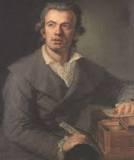Planning worship?
Check out our sister site, ZeteoSearch.org,
for 20+ additional resources related to your search.
- |
User Links
Search Results
O Saviour, where shall guilty man
Author: Caroline E. May Meter: 8.6.8.8.6 Appears in 21 hymnals Topics: Atonement Necessary; Christ Passion and Crucifixion; Christ Substitute; Evangelistic Services; Grace Justifying; Imputation Used With Tune: NEWCASTLE
O Saviour, where shall guilty man
O Savior, Where Shall Guilty Man
Author: Caroline E. May Hymnal: The Cyber Hymnal #5348 Meter: 8.6.8.8.6 Lyrics: 1. O Savior, where shall guilty man
Find rest except in Thee?
Thine was the warfare with his foe,
The cross of pain, the cup of woe,
And Thine the victory.
2. How came the everlasting Son,
The Lord of Life, to die?
Why didst Thou meet the tempter’s power,
Why, Jesus, in Thy dying hour
Endure such agony?
3. To save us by Thy precious blood,
To make us one in Thee,
That ours might be Thy perfect life,
Thy thorny crown, Thy cross, Thy strife,
And ours the victory.
4. O make us worthy, gracious Lord,
Of all Thy love to be;
To Thy blest will our wills incline,
That unto death we may be Thine,
And ever live in Thee. Languages: English Tune Title: NEWCASTLE
O Savior, Where Shall Guilty Man
O Savior, where shall guilty man
Author: Caroline E. May Hymnal: Immanuel Hymnal #d365 (1929) Languages: English
O Savior, where shall guilty man
O Savior, where shall guilty man
Author: Caroline E. May Hymnal: Church Hymnal, Mennonite #d404 (1940) Languages: English
O Savior, where shall guilty man
Samuel Sebastian Wesley

1810 - 1876 Person Name: S. S. Wesley Composer of "ENGEDI" in The Book of Common Praise Samuel Sebastian Wesley (b. London, England, 1810; d. Gloucester, England, 1876) was an English organist and composer. The grandson of Charles Wesley, he was born in London, and sang in the choir of the Chapel Royal as a boy. He learned composition and organ from his father, Samuel, completed a doctorate in music at Oxford, and composed for piano, organ, and choir. He was organist at Hereford Cathedral (1832-1835), Exeter Cathedral (1835-1842), Leeds Parish Church (1842-1849), Winchester Cathedral (1849-1865), and Gloucester Cathedral (1865-1876). Wesley strove to improve the standards of church music and the status of church musicians; his observations and plans for reform were published as A Few Words on Cathedral Music and the Music System of the Church (1849). He was the musical editor of Charles Kemble's A Selection of Psalms and Hymns (1864) and of the Wellburn Appendix of Original Hymns and Tunes (1875) but is best known as the compiler of The European Psalmist (1872), in which some 130 of the 733 hymn tunes were written by him.
Bert Polman
Samuel Sebastian Wesley
Johann G. Naumann

1741 - 1801 Person Name: Naumann Composer of "NAUMANN" in Laudes Domini Johann Gottlieb Naumann; b. near Dresden, 1741; d. Dresden, 1801
Evangelical Lutheran Hymnal, 1908
==========================
Born: April 7, 1741, Blasewitz, Dresden, Germany.
Died: October 23, 1801, Dresden, Germany.
Buried: Eliasfriedhof, Dresden, Germany.
Naumann received his musical training in his town school, where he learned piano and organ. Later, he studied at the Kreuzschule in Dresden and was a member of the Dresden Kreuzchor. In Dresden, he learned from the organist and cantor of the Kreuzschule, Gottfried August Homilius, a student of Bach. In May 1757, he traveled to Italy with Swedish violinist Anders Wesström. Composer Giuseppe Tartini encountered Naumann in 1762 and took an interest in his work. Later that year, Naumann made his debut as an opera composer in Venice with Il Tesoro Insidiato. After his successful 1764 production of Li Creduti Spiriti, he was engaged as the second church composer at the Dresden court, on the recommendation of composer Johann Adolf Hasse.
In 1777, as a result of negotiations by Swedish diplomat Count Löwenhjelm, Naumann was appointed to reform the Stockholm Hovkapell and help King Gustavus III in his opera plans. His work in Sweden led to the 1782 production of his opera Cora och Alonzo at the inauguration of the new opera house in Stockholm, and the 1786 production of Gustaf Wasa, based on an idea of the king for a Royal Swedish Opera. After a period as guest composer in Copenhagen (1785-56), he returned to Dresden, where he became Oberkapellmeister.
In 1792, Naumann married Catarina von Grodtschilling, daughter of a Danish vice-admiral. His grandson was composer Ernst Naumann (1832–1910).
http://www.hymntime.com/tch/bio/n/a/u/naumann_jg.htm
==============================
http://en.wikipedia.org/wiki/Johann_Gottlieb_Naumann
Johann G. Naumann


 My Starred Hymns
My Starred Hymns


